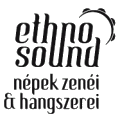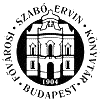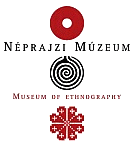Válogatott irodalom Belső-Ázsia zenéjéhez
- Könyvek
1. Aksenov, A. N. : Tuvinskaia narodnaia muzyka [Tuvin folk music]. Moscow. 1964.
2. Slobin, M. : Music of Central Asia and the Volga-Ural Peoples. Bloomington, IN. 1977.
3. Tucci, Giuseppe : ‘Die Religionen Tibets’. In : Die Religionen Tibets und der Mongolei. ed. Tucci, G. and Heissig. W. London. 1980. Routledge & Kegan Paul.
- Időszaki kiadványok
1. Aksenov, A. N. : ‘Tuvin Folk Music’. In : AsM, iv/2. 1973. 7–18. p.
2. Ellingson, T. : ‘Dancers in the Marketplace: Tibetan Religious Dances’. In : AsM, x/2. 1979. 159–78. p.
3. Levin, Theodore Craig : The hundred fools of god : musical travels in Central Asia. Bloomington, IN. 1996. Indiana University Press.
4. Mostaert, A. : Textes oraux Ordos. Peip'ing. 1937.
5. Nebesky-Wojkowitz, R. de : Tibetan Religious Dances: Text and Translation of the ’Chams yig, ed. C. von Fürer-Haimendorf. Paris. 1976.
6. Oost, P. J. van : ‘La musique chez les Mongols des Urdus’. In : Anthropos, x–xi. 1915–16. 358–96.p.
7. Pegg, C. A. : ‘The Revival of Ethnic and Cultural Identity in West Mongolia: The Altai Uriangkhai tsuur, the Tuvan shuur and the Kazak sybyzgy’. In : Journal of the Anglo-Mongolian Society, xii/1–2. 1991. 71–84. p.
8. Pegg, C. A. : ‘The Epic is Dead, Long Live the Üliger?’. In : Epensymposium VI: Bonn 1988, Fragen der mongolischen Heldendichtung, v. Wiesbaden. 1992. 194–206. p.
9. Perris, A. : ‘Music as Propaganda: Art at the Command of Doctrine in the People's Republic of China’. In : EthM, xxvii/1. 1983. 1–28. p.
10. Tethong, Rakra : ‘Conversations on Tibetan Musical Traditions’. In : AsM, x/2. 1979. pg. 5–22
11. Vainshtein, S. I. : ‘A Musical Phenomenon Born in the Steppes’. In : Soviet Anthropology and Archaeology, xviii/3. 1979–80. 68–81. p.
- Gyűjteményes kötetek
1. Diószegi, Vilmos : ‘Ethnogenic Aspects of Darkhat Shamanism’, Acta Orientalia Academiae Scientiarum Hungaricae, xvi/1. 1963. pg. 55–81
2. Nimri Aziz, B. : ‘On Translating Oral Traditions: Ceremonial Wedding Poetry from Dingri’. In : Soundings in Tibetan civilization. ed. Aziz, Barbara Nimri and Kapstein, Matthew. New Delhi. 1985. Manohar. 115–31. p.
3. Pegg, Carole : Mongolian music, dance, & oral narrative : performing diverse identities. Seattle. 2001. University of Washington Press.
4. Potapov, L. P. : ‘The Shaman Drum as a Source of Ethnographical History’. In : Diószegi, Vilmos and Hoppál, Mihály (ed.): Shamanism in Siberia, ed. Budapest. 1978. Akadémiai Kiadó. 169–80. p.
5. Vainshtein, S. I. : ‘The Tuvan (Soyot) Shaman's Drum and the Ceremony of its Enlivening’. In : Folk beliefs and shamanistic traditions in Siberia. ed. Diószegi, Vilmos and Hoppál, Mihály. Budapest. 1996. Akadémiai Kiadó. 127–34. p.
- Disszertációk
1. Tongeren, M. van : Xöömej in Tuva: New Developments, New Dimensions. diss. U. of Amsterdam. 1994.
2.Vertkov, K. A., Blagodatov, G. I. and Yazovitskaya, E. E. : Atlas muzïkal′nïkh instrumentov narodov SSSR [Atlas of musical instrument of the peoples inhabiting the USSR]. Moscow. 1963.


